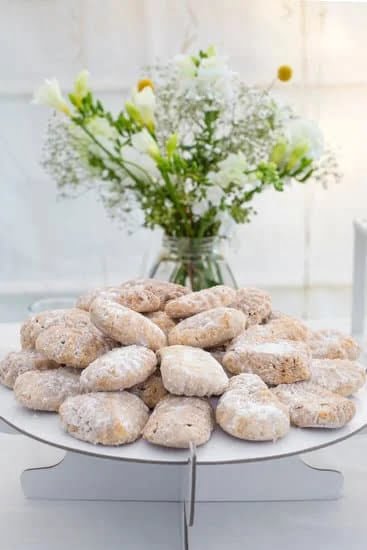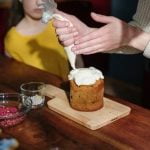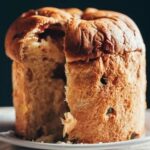Decorating the top of a cake is an essential part of the baking process, as it adds the finishing touch and enhances the overall presentation. Whether you’re a novice baker or a seasoned pro, knowing how to decorate the top of a cake can take your creations to the next level.
From using different icing and frosting techniques to incorporating unique toppings like edible flowers and candy, there are countless ways to make your cake stand out. In this article, we’ll explore various tools and materials needed for cake decorating, different techniques for creating intricate designs, and step-by-step guides for decorating the top of a cake for different occasions.
Creating stunning cake decorations not only adds visual appeal but also showcases your creativity and style. Whether you’re making a birthday cake, wedding cake, or just want to impress your friends and family with a delicious treat, mastering the art of cake decoration is essential.
Throughout this article, we will cover everything from troubleshooting common decorating issues to inspiring ideas for your next project. So, let’s dive into the world of cake decorating and learn how to create show-stopping designs for any occasion.
Tools and Materials Needed for Cake Decorating
Decorating the top of a cake can be a fun and creative way to personalize your dessert for any occasion. Before you start your cake decorating project, it’s important to gather all the necessary tools and materials to ensure that your designs come out looking professional and polished. Here are some essential items you will need for cake decorating:
Basic Equipment
To start off, you’ll need a few basic tools such as offset spatulas for spreading icing, cake turntables for easy maneuvering, and cake levelers for creating even layers. Additionally, having a set of mixing bowls, measuring cups, and spoons will be helpful for preparing your icing and frosting.
Piping Bags and Tips
Invest in a good set of piping bags and tips to achieve intricate designs with ease. There are various types of piping tips such as round tips, star tips, leaf tips, and petal tips that can create different effects on the surface of your cake. Make sure to have a variety of sizes to give you flexibility in your design choices.
Edible Decorations
Consider using edible decorations like sprinkles, edible glitter, or metallic dragees to add some sparkle to your cake design. You may also want to have food coloring gels on hand to customize the color of your frosting or fondant.
Now that you have gathered all the necessary tools and materials, it’s time to dive into different icing and frosting techniques for creating beautifully decorated cakes for any occasion.
Different Icing and Frosting Techniques for Cake Decoration
Icing and frosting are essential elements in cake decoration, as they provide the base for any design or pattern you want to create on the top of a cake. Here are some different techniques for using icing and frosting to decorate a cake:
- Buttercream: Buttercream is a popular choice for cake decorating due to its smooth texture and ability to hold intricate designs. It can be easily colored and flavored, making it versatile for various designs such as piping flowers, borders, and writing messages on cakes.
- Royal Icing: This type of icing dries hard, making it perfect for creating detailed and delicate decorations like lace patterns and intricate designs. It’s commonly used for decorating cookies, but can also be used on cakes for a stunning effect.
- Whipped Cream: Whipped cream is light and airy, making it ideal for creating soft, billowy textures on cakes. It’s best used for simple designs or as a base for fresh fruit decorations. However, it should be kept refrigerated until ready to serve.
- Ganache: Made by combining chocolate and heavy cream, ganache is great for creating a sleek, glossy finish on cakes. It can be poured over the top of a cake to create a smooth layer or allowed to set slightly before being whipped into swirls or peaks.
Using these different types of icing and frosting opens up endless possibilities for decorating the top of a cake. Experiment with each one to find out which works best for your desired design and learn how to decorate the top of a cake that suits every occasion.
Using Piping Tips and Techniques for Intricate Designs
When it comes to cake decoration, using piping tips and techniques is a great way to create intricate designs and add a professional touch to your baked creations. Piping tips, also known as pastry or frosting tips, come in various sizes and shapes, allowing you to pipe different patterns and textures onto the top of your cake.
To start decorating the top of a cake using piping tips, you will need a few key tools and materials including a piping bag, couplers, piping tips (such as round tips, star tips, open star tips, petal tips), and icing or frosting of your choice. It’s important to practice using the different piping tips on a piece of parchment paper or a plate before moving on to decorating your cake.
One popular technique for using piping tips is creating rosettes or swirls around the perimeter of the cake. This adds elegance and dimension to the top of your cake while serving as a border for other decorations such as edible flowers or fresh fruit.
You can also use small round piping tips to create intricate lace patterns or delicate lettering for special occasions like weddings or birthdays. Experiment with different piping techniques and designs to find what works best for your cake decoration needs.
Decorating With Edible Flowers and Fresh Fruit
Decorating a cake with edible flowers and fresh fruit is a beautiful and natural way to add color, texture, and flavor to your dessert. This section will explore different ways to incorporate these elements into your cake decorating, as well as provide tips on how to choose the best flowers and fruit for your design.
When it comes to using edible flowers, it’s important to select blooms that are safe for consumption. Some popular choices include roses, violets, pansies, and lavender. It’s crucial to ensure that the flowers you use have not been treated with pesticides or other chemicals that could be harmful if ingested. Additionally, consider the flavor profile of the flowers you choose – some can be quite strong and may overpower the taste of the cake.
As for fresh fruit, the possibilities are endless. Berries like strawberries, raspberries, and blueberries are popular choices for their vibrant colors and sweet-tart flavor. Slices of kiwi, mango, or pineapple can add a tropical touch to your cake. When using fresh fruit as a cake decoration, it’s important to consider how long your cake will be on display – some fruits may begin to wilt or release juices over time.
Incorporating edible flowers and fresh fruit into your cake decorating requires careful consideration of both aesthetic appeal and taste. With the right selection and arrangement, these natural elements can elevate your cake from ordinary to extraordinary. Whether you’re aiming for a rustic look with scattered blooms or an elegant design with carefully placed slices of fruit, experimenting with these decorations can result in stunning and delicious creations.
| Edible Flowers | Fresh Fruit |
|---|---|
| Roses | Strawberries |
| Violets | Raspberries |
| Pansies | Blueberries |
Incorporating Chocolate and Candy for Unique Cake Toppings
When it comes to decorating the top of a cake, incorporating chocolate and candy can add a unique and delicious touch to your creation. Whether you’re looking to impress your guests at a birthday party or simply want to indulge in a sweet treat, using chocolate and candy for cake toppings can take your dessert to the next level.
One popular way to incorporate chocolate into cake decorating is by using chocolate shavings or curls. You can create these by running a vegetable peeler along the edge of a chocolate bar, creating beautiful and delicate curls that can be sprinkled on top of your cake.
Alternatively, you can use a grater for smaller chocolate shavings. This technique not only adds a touch of elegance to your cake but also provides a rich and decadent flavor that pairs well with various types of cake.
In addition to chocolate, using a variety of colorful candies as cake toppings can create eye-catching designs that are sure to impress. From sprinkles and M&M’s to gummy bears and candy-coated chocolates, the possibilities are endless.
Consider arranging the candies in different patterns or creating fun shapes and designs on top of the icing/frosting for a playful and whimsical look. No matter what type of cake you’re decorating, adding chocolate and candy as toppings will surely make it an instant hit at any event.
Tips for Using Fondant to Create Stunning Cake Toppers
Fondant is a popular choice for creating stunning cake toppers due to its smooth and versatile nature. When using fondant, it’s important to have the right tools and techniques to achieve the desired result. One essential tool for working with fondant is a rolling pin, which allows for seamless flattening of the fondant. Additionally, a sharp knife or fondant cutter is useful for cutting out intricate shapes and designs.
To start using fondant for cake decoration, it’s important to knead it until it becomes soft and pliable. This will make it easier to work with and mold into the desired shapes. Dusting your work surface with confectioners’ sugar or cornstarch can prevent the fondant from sticking while you roll it out.
For those looking to create detailed designs and textures, silicone molds can be used to add intricate patterns and shapes to the fondant. These molds come in various designs such as flowers, lace, and geometric patterns. Using them can add an elegant touch to your cake decorations without requiring advanced sculpting skills.
When using fondant, remember that any excess should be stored properly to prevent drying out. Tightly wrap unused fondant in plastic wrap and place it in an airtight container before storing it at room temperature. This ensures that the fondant remains pliable for future use.
Lastly, keep in mind that practice makes perfect when working with fondant. Don’t be discouraged if your first attempts don’t turn out as expected – mastering the art of using fondant takes time and patience.
| Tools Needed | Techniques |
|---|---|
| Rolling pin | Kneading until soft |
| Sharp knife or fondant cutter | Dusting work surface with confectioners’ sugar |
| Silicone molds | Proper storage methods |
Step-by-Step Guide
Decorating the top of a cake is an essential part of creating a visually appealing and delicious dessert. Whether it’s for a birthday, wedding, or any special occasion, knowing how to decorate the top of a cake can take your baking skills to the next level. In this section, we will provide you with a step-by-step guide on how to decorate the top of a cake for different occasions.
Choosing the Right Theme and Colors
Before you start decorating your cake, it’s important to consider the theme and colors that best suit the occasion. For example, pastel colors and floral designs may be perfect for a springtime wedding, while vibrant colors and whimsical decorations are ideal for a child’s birthday party. Consider the overall aesthetic you want to achieve before you begin gathering your materials.
Selecting Your Decoration Techniques
Once you have decided on a theme and color scheme, it’s time to choose your decoration techniques. Depending on your skill level and personal preference, you may opt for simple icing borders, intricate piping designs, or even using fondant to create sculpted cake toppers. Each technique offers its own unique charm and can elevate the overall look of your cake.
Assembling Your Cake Toppings
Gather all the necessary toppings for your cake decoration such as fresh fruits, edible flowers, chocolate shavings or candy pieces. These toppings can add texture and flavor to your creation while complementing the theme and colors you’ve chosen.
Be sure to prepare these elements ahead of time so that they are readily available once you start decorating. With these step-by-step guidelines in mind, you’ll be well-prepared to decorate the top of a cake that will surely impress your guests at any occasion.
Troubleshooting Common Cake Decorating Issues
When it comes to decorating the top of a cake, there are certain common issues that may arise. It’s important to be prepared for these potential challenges and know how to troubleshoot them effectively. Here are some common cake decorating issues and how to address them:
- Crumbly or Dry Cake: If your cake is crumbly or dry, it can be difficult to work with when decorating. To prevent this issue, make sure to properly measure and sift your dry ingredients when baking the cake. If the cake has already been baked, you can try brushing it with a simple syrup or flavored liquid to add moisture before decorating.
- Sagging or Bulging Frosting: Sometimes, frosting can sag or bulge in the middle of the cake, especially if the layers are not properly stacked. To avoid this issue, make sure that your cake layers are leveled and stacked evenly. Additionally, using a crumb coat before applying the final layer of frosting can help create a smooth surface.
- Uneven Decoration: Achieving even decoration on the top of a cake can be tricky, especially when using techniques like piping intricate designs. To ensure even decoration, you can use a turntable to rotate the cake while working on it. This allows for more control and precision as you decorate.
By being aware of these common issues and knowing how to troubleshoot them, you can ensure that your cake decorating project goes smoothly. Remember that practice makes perfect when it comes to mastering the art of decorating the top of a cake, so don’t be discouraged by any challenges that may arise. With patience and dedication, you’ll soon be creating stunning and delicious works of art for all occasions.
Lastly, remember that having the right tools and materials is crucial for successful cake decorating. Make sure you have everything you need before getting started, such as piping bags and tips, offset spatulas, fondant smoothers, and edible decorations like fresh fruit and flowers. With the proper preparation and troubleshooting skills, you’ll be well-equipped to tackle any potential issues that may arise during your next cake decorating adventure.
Conclusion
In conclusion, decorating the top of a cake is not only important for visual appeal but also adds a special touch to any occasion. Whether it’s a birthday, wedding, or simply a way to showcase your creativity in the kitchen, mastering the art of cake decoration is a valuable skill.
From using different icing and frosting techniques to incorporating edible flowers and fresh fruit, there are numerous ways to create stunning cake toppings that will leave a lasting impression on your guests.
When it comes to decorating the top of a cake, having the right tools and materials is essential. Piping tips and techniques allow you to create intricate designs, while using fondant can elevate your cake with stunning toppers.
Additionally, incorporating chocolate and candy for unique toppings adds flair and dimension to your creations. By following a step-by-step guide tailored for different occasions, such as birthdays or weddings, you can confidently bring your vision to life with each cake decorating project.
Whether you’re an experienced baker or just starting out, troubleshooting common cake decorating issues is part of the learning process. Embracing mistakes and finding solutions will help you improve your skills over time. By exploring new techniques and staying inspired by different ideas, you’ll be able to elevate your next cake decorating project and impress everyone with your creativity and attention to detail when it comes to decorating the top of a cake.
Frequently Asked Questions
What Can I Use to Decorate the Top of a Cake?
When it comes to decorating the top of a cake, there are many options to choose from. You can use fresh fruits like berries or sliced peaches for a natural and colorful touch. Another idea is to use chocolate shavings, edible flowers, or even small candies.
What Should I Put on Top of My Cake?
The choice of what to put on top of your cake ultimately depends on the occasion and your personal preference. If you’re celebrating a birthday, consider writing a message with frosting or using candles for a festive touch. For a more elegant look, consider using gold leaf, macarons, or meringue kisses.
What Can I Top a Cake With Besides Frosting?
Besides frosting, there are several alternatives that can be used to top a cake. One option is ganache, which provides a smooth and glossy finish.
Alternatively, you can use whipped cream for a lighter topping, or cream cheese for a tangy flavor. Freshly-made caramel sauce or fruit coulis can also add an extra layer of flavor and visual appeal to your cake.

Welcome to our cake decorating blog! My name is Destiny Flores, and I am the proud owner of a cake decorating business named Cake Karma. Our mission is to provide delicious, beautiful cakes for all occasions. We specialize in creating custom cakes that are tailored specifically to each customer’s individual needs and tastes.





